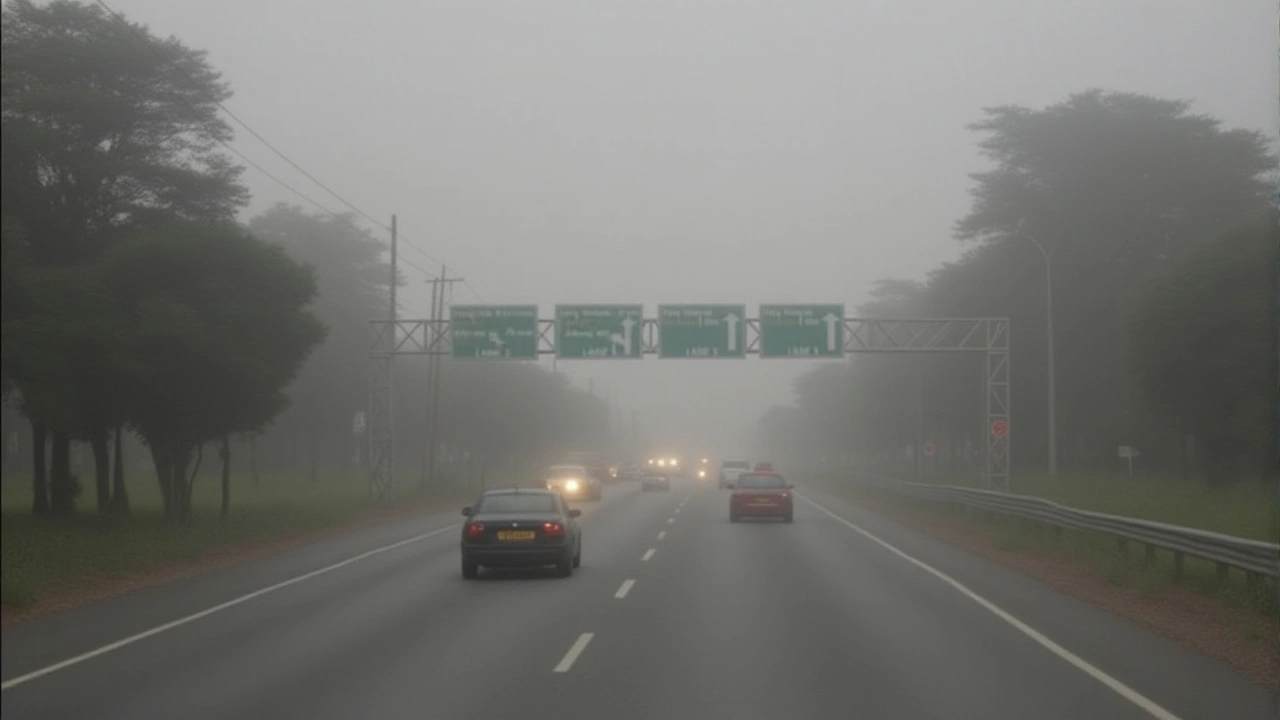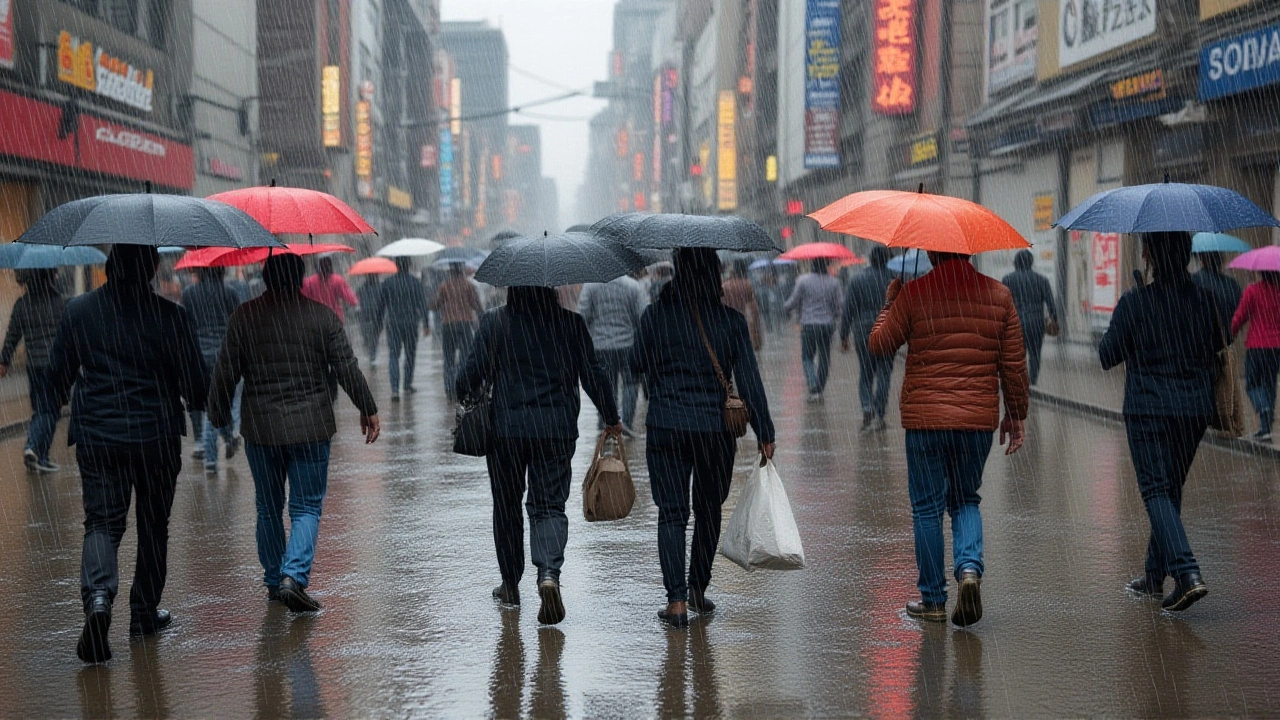Kenya Meteorological Dept Warns of Cold Nights and Light Rains Across 30 Counties

When Kenya Meteorological Department released its latest outlook, Dr. Stephen Murithi, Chief Meteorologist warned that cold nights and light showers will linger through July and into August 2025, touching more than thirty counties from the highlands to the lake basin.
Seasonal Context and Temperature Trends
The department’s July analysis shows the country sitting at the apex of its cold season. In the Central highlands — especially around Nairobi — daytime highs have crept above the long‑term July mean, while night‑time lows dip lower, creating a classic “clear‑day, chilly‑night” pattern.
Two stations stood out. On July 14, Mandera Meteorological Station logged a sizzling 36.6 °C, the highest daily maximum for the week. Conversely, Laikipia’s hills recorded a frigid 9.3 °C low on July 20, the coldest nightly dip recorded across the network.
When you average the seven‑day span, Lodwar’s gauges showed a high of 34.9 °C, while Laikipia’s night‑time average lingered just above 10 °C. The contrast highlights Kenya’s topographic drama: the arid north experiences daytime heat, the central plateau enjoys crisp evenings.
Seven‑Day Forecast Highlights (July 22‑28)
During the official seven‑day forecast, the department painted a patchwork of sunny mornings turning cloudy by mid‑day. Western counties — Kakamega, Bungoma, Siaya, Busia, and the neighboring Nandi, Kericho and Kisumu — will see intermittent light rains, often in the form of drizzle that eases into brief thunderstorms later in the afternoon.
- Morning sunshine across the Highlands West of the Rift Valley.
- Afternoon showers likely in isolated spots, occasionally spreading to larger swaths.
- Night‑time rain expected in a handful of locations, primarily in the lake basin.
- Hail remains a remote but possible threat in higher altitude zones.
For the Central Highlands and the South Rift Valley — think Nakuru, Baringo and the Nairobi metro — expect cool, cloudy spells peppered with gentle rain. Farmers there may welcome the moisture, especially after a dry spell earlier in the year.
Regional Outlook and Agricultural Implications
The forecast carries mixed messages for Kenya’s agrarian economy. In the Lake Victoria Basin, the light but steady drizzle could boost soil moisture just as maize is entering its tasseling stage. Meanwhile, the cooler nights in the highlands may reduce evapotranspiration, preserving water for early vegetable crops.
But there’s a flip side. Hailstorms, while not forecasted as a dominant feature, have historically shredded wheat and barley in the high elevations of Elgeyo‑Marakwet and West Pokot. The department urges growers to keep protective netting handy.

Expert Views and Concerns
"We’re seeing a classic East African cold season amplified by a dip in the Indian Ocean,” says Prof. Amina Njeri, a climate scientist at the University of Nairobi. "The temperature swing between day and night is beneficial for some crops, but hail risk spikes in the highlands, so vigilance is key."
Local traders in Kisumu have already adjusted market prices, noting that the anticipated light rains could lift fish pond water levels, while cooler nights may slow up the fermentation process of traditional brews.
What’s Ahead: August Outlook
On July 30, the department released its August 2025 Climate Outlook. The picture remains similar: occasional cold snaps, lingering cloud cover, and spotty rain across the eastern and western highlands. Forecast models suggest a slight warming trend in the lowlands of Lamu and Msabaha, but night‑time lows will stay lower than the July average.
In practical terms, commuters in Nairobi should keep an extra jacket handy for evening travel, while tourists heading to the Maasai Mara can expect clear mornings perfect for game viewing, followed by possible evening showers.
Frequently Asked Questions
How will the cold nights affect smallholder farmers?
Cooler night‑time temperatures lower evaporation rates, allowing soils to retain moisture longer. This benefits crops like beans and potatoes that are sensitive to drought, though farmers in high‑altitude zones should watch for hail that could damage budding maize.
Which regions are expected to see the heaviest rainfall?
The lake‑vicinity counties — Kisumu, Homa Bay, Siaya and Busia — are slated for the most frequent showers, especially in the afternoons. Isolated thunderstorms may also roll into Kakamega and Bungoma, but overall totals remain light.
What temperatures are expected in Nairobi this week?
Daytime highs should hover around 22‑24 °C, while night‑time lows dip to 11‑12 °C. The pattern mirrors a typical Kenyan July, with clear mornings giving way to occasional drizzle in the late afternoon.
When is the next major weather update due?
The Kenya Meteorological Department issues weekly bulletins every Tuesday. The next release is scheduled for August 5, 2025, and will include a revised outlook for the remainder of the month.
Are hailstorms a real threat this season?
While hail is not forecasted as a dominant feature, the highland districts of Elgeyo‑Marakwet, West Pokot and parts of the Rift Valley retain a modest risk due to the sharp day‑night temperature swings. Residents are advised to protect vulnerable crops.
Looks like the cold nights and light showers will be a real thing across most of Kenya this month.
Honestly, the authorities have been utterly negligent in warning farmers about the looming hail threats – a blatant disregard for rural livelihoods. Their complacent forecasts are nothing short of a scandal, and anyone who trusts them is committing a grave error.
I appreciate the detailed breakdown of temperature swings; it really helps us understand how the crops will react. The cooler nights will certainly aid moisture retention for beans and potatoes. At the same time, the chance of hail in highlands remains a concern for maize growers. Farmers should keep an eye on protective measures.
One must marvel at the sheer theatricality of this meteorological tableau – a symphony of sunlit morns giving way to tempestuous drizzles. The highland drizzle serves as nature's whispered promise to the agrarian soul, while the arid north basks in relentless heat. Yet, lurking beneath this pastoral poetry lies the ever‑present specter of hail, a capricious maestro ready to shatter the harvest. It is, frankly, a drama worthy of scholarly discourse.
From a climatological perspective, the current cold night pattern is consistent with the seasonal dip in the Indian Ocean temperatures, which typically drives cooler nocturnal lows across the highland regions. The juxtaposition of higher daytime maxima in the arid north, such as the 36.6 °C recorded at Mandera, underscores the pronounced latitudinal thermal gradient that characterizes this period. In the Central Highlands, the diurnal range remains moderate, with Nairobi’s daytime highs hovering around 22‑24 °C while night‑time lows settle between 11‑12 °C, fostering a suitable environment for frost‑sensitive vegetables. Moreover, the light rains projected for the lake basin counties will contribute to incremental soil moisture recharge, benefitting crops in their tasseling phase, especially maize. It is essential, however, for smallholder farmers to anticipate the modest hail risk in Elgeyo‑Marakwet and West Pokot, as historical data indicate occasional hail events that can damage budding stalks. Protective netting, though seemingly a trivial investment, can substantially mitigate yield losses during these sporadic storms. The forecast’s indication of intermittent drizzle progressing to brief thunderstorms in the afternoons aligns with convective activity driven by daytime heating over the Rift Valley. While the probability of severe convective systems remains low, the presence of localized wind shear could still generate microbursts affecting corn fields. Farmers should therefore monitor real‑time radar updates for any sudden intensification of convective cells. Additionally, the sustained cloud cover will reduce evaporative demand, conserving soil water resources for early‑season vegetables such as beans and potatoes, which are particularly sensitive to drought stress. The projected cooling effect on nighttime temperatures will also help in preserving the integrity of stored tubers, reducing post‑harvest losses caused by excessive heat. In terms of livestock, the cooler nights are expected to lower heat stress in dairy cattle, potentially improving milk yield stability. Conversely, the light rains may increase the prevalence of foot‑rot in wet pastures, so adequate drainage measures are advisable. Lastly, the August outlook suggests a slight warming trend in low‑lying coastal districts like Lamu, but night‑time lows will continue to lag behind historical averages, providing a nuanced climatic shift that stakeholders must incorporate into their agricultural planning strategies.
Contemplating the meteorological cadence, one discerns a harmonious interplay between thermodynamic forces and agronomic outcomes. The diurnal oscillation, wherein solar insolation begets daytime warmth followed by radiative cooling, underpins the suitability of leafy vegetables during this interval. Yet, the specter of hail introduces an element of stochastic disruption that philosophers of climate would find most intriguing. Prudence dictates that farmers adopt prophylactic measures, lest chance overturn diligent toil. Thus, the season embodies both order and chaos, a duality worthy of reflection.
The forecast provides actionable intel for both urban commuters and rural growers. Nairobi residents should consider an extra layer for evening travel, while farmers can plan irrigation around the predicted light showers. Keeping abreast of the weekly bulletins will ensure timely adjustments.
While some dismiss these modest rains as trivial, they embody nature's subtle assertion of sovereignty over our fragile food systems.
Thanks for the insights! 😊 This really helps us plan our garden. 🌱
Interesting take! I think the colorful description captures the mood, but for the average farmer a straightforward rain‑schedule matters more.
Great points, especially about the hail risk – definitely something to keep in mind.
Appreciate the concise summary. Stay safe.